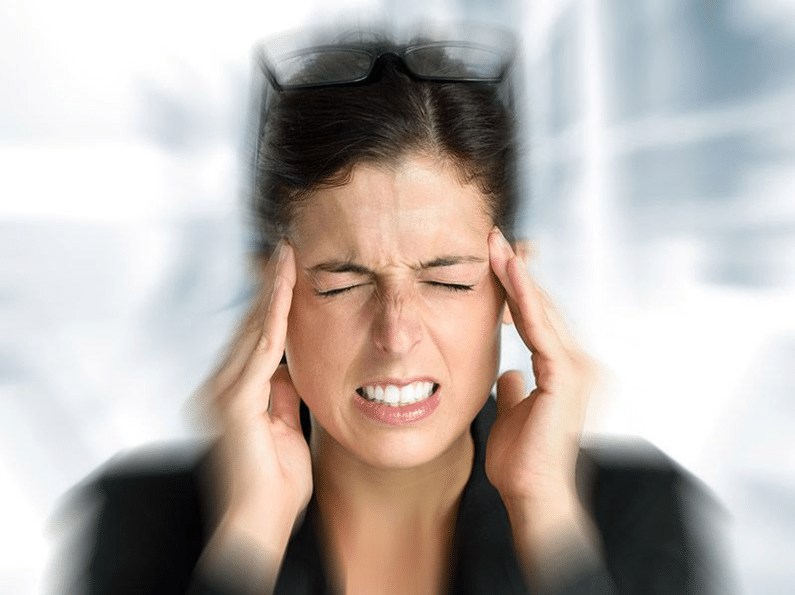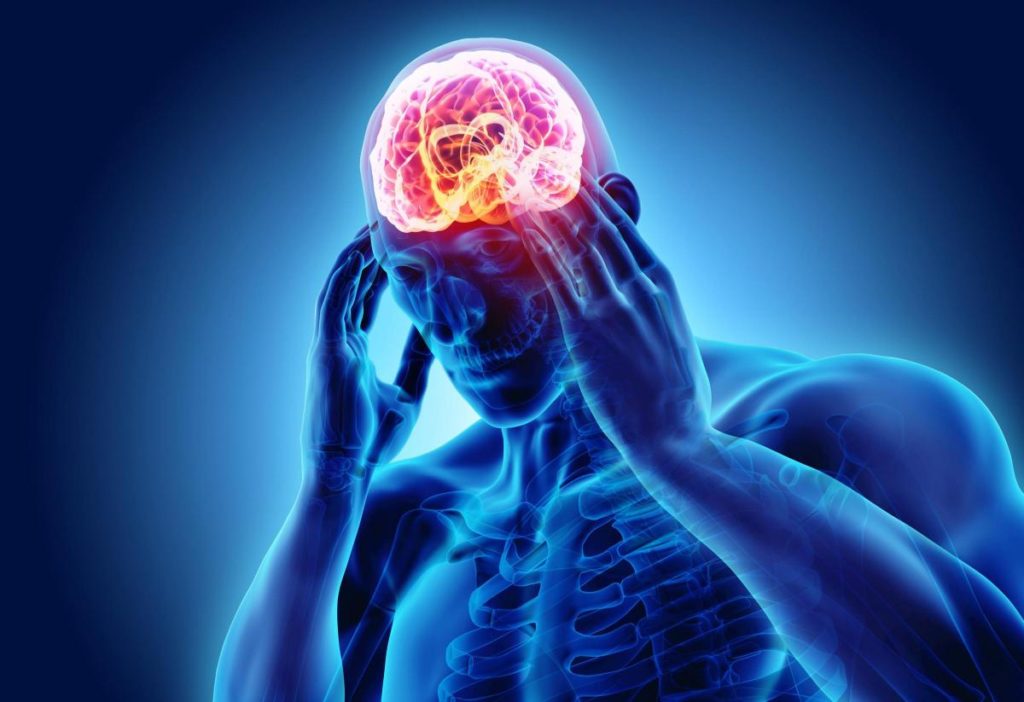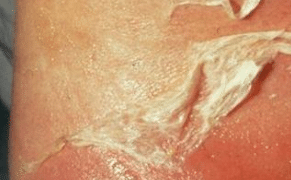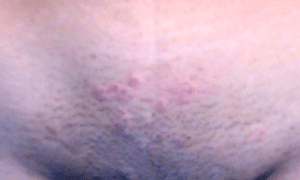What are headache types and how how to Treat it?
Cephalgia or headache is the most common complaint of all humans.
Headache is a pain in the head that could radiate or localized, and located above the eye (frontal lobe) or on the back of the head (occipital lobe).
Headache is a symptom, not a disease and it may indicate a health problem.
These causes could be tension, migraine, neurological disease, stress response, or combination headache.
Headache classified as primary and secondary. Primary headaches are more difficult to understand than secondary headaches because secondary headaches are caused by an underlying disease.

Types of primary headaches based on the classification subcommittee of international headache society include:
- Cluster headache this type of headache occurred more often in men rather than women. The cluster headache is not clearly understood as it causes dilation of orbital arteries. Cluster headaches are unilateral and come in clusters, each attack last 15 minutes to 3 hours
- Tension headache is the most common type of headache. Emotional stress can cause scalp muscle contractions, resulting in tension headaches. Tension headache characterized by a continuous feeling of band-like pressure in the forehead or back of the neck
- Migraine headache is characterized by recurrent and severe attacks of headache lasting up to three days. Migraine result from a rise in plasma serotonin, which dilates the cerebral vessels. It can be increased with lights, fatigue, depression, sleep disturbances, milk products, nitrites, certain medication overuse, monosodium glutamate, and menstrual cycles.
- Headache due to withdrawal symptoms.
- Headache related to head/neck trauma.
- Headache attributed to infection.
- Headache attributed to cranial disorder.
- Headache attributed to facial pain, ex: eyes, mouth, ears, nose, and teeth.
- Headache that related to a psychiatric disorder.
- Other headaches.
Types of secondary headache include:
- Meningitis: Meningitis is an acute inflammation of the brain and spinal cord membranes.
- Intracranial hemorrhage: intracranial hemorrhage is bleeding within the skull.
- Temporal arteritis: temporal arteritis is an inflammation of large blood vessels in the head.
- Brain tumor
- Glaucoma: glaucoma is an increase in eyeball pressure.
- Subarachnoid hemorrhage: subarachnoid hemorrhage is bleeding around the brain
- Rupture aneurysm: rupture aneurysm is a bulging of the blood vessel wall
Although primary headache is not a serious disease, if you have a persistent headache then you have to see your doctor immediately.

Migraine phases
- Prodrome phase: the prodrome phase occurs in the majority of patients experience migraines. In this phase, the patient’s symptoms include anorexia, depression, constipation, or diarrhea, feeling cold, change in activity, irritability, and increase urination these symptoms occur from hours to days.
- Aura phase: the aura phase experienced by the minority, not like the prodrome phase. It usually lasts less than one hour, the attacks can’t be tolerated and the patient has to take the prescribed medication. Mild confusion and slight weakness of extremity with tingling of the lips are major symptoms besides visual disturbances.
- Headache phase: headache phase starts after the aura phase, vasodilation occurs and severe pain attacks intensify over several hours. Symptoms are nausea, vomiting, and photophobia. The headache phase lasts up to three days.
- Recovery phase: this is the termination phase, the pain gradually decreases. Scalp muscle contraction associated with itching and tenderness, exhaustion are common symptoms in this phase.
Headache Types Diagnosis
There is no definite tool to diagnose different headache types, but diagnostic evaluation includes:
- Health history: headache may be described differently from patient to patient, and maybe recognized differently in the same patient over the course of the lifetime. Health history focuses on the patient own word to describe the headache. So, your doctor may ask questions regarding your headache. The most important step in diagnosing a headache is for the physician to take a careful history and to examine the patient. The major questions include:
- Location: frontal, occipital, orbital, or temporal.
- Lateralization: unilateral or bilateral.
- Gender: male or female.
- Frequency: chronic or episodic.
- Severity: mild, moderate or severe.
- Duration: for how long the pain lasts.
- Pain characteristics: pain description such as throbbing or pulsating.
- Trigger: aggravated with movement or decrease with movement.
- Associated symptoms: pain associated with nausea, vomiting, photophobia, or phonophobia.
- Physical examination of head and neck: your doctor will look for signs and symptoms of an illness that causes headaches, such as:
- Pulse and blood pressure abnormalities.
- Vision changes.
- Speech difficulty.
- Loss of consciousness.
- Metal changes.
- Balance problems.
- Seizure.
- Muscle weakness.
- Ear problems.
- Neurological examination: your doctor will rule out if you have a headache caused by nerve or brain damage, such as:
- Brain mass.
- Brain infection.
- Brain inflammation (encephalitis).
- Increased intracranial pressure.
- Brain hemorrhage.
- Cerebral aneurysm.
- Injuries.
- Fluids compress the brain (hydrocephalus).
- Medication history: medication history is essential because there is medication can provoke headaches.
- Occupational history: occupational history is important, because work stress and emotional distress during work may increase the risk of a headache. Chemical substances and exposure to toxic substances have a direct relation with the headache.
- Brain imaging such as brain MRI, MRA, and CT scan: these diagnostic tools to assess brain and to rule out other condition related brain disease.
- EEG (electroencephalogram): electroencephalogram performed to rule out the seizure.
- Eye examination: your doctor may perform this exam to rule out the pressure on the optic nerve as a cause of headache.
- Lumbar puncture: this procedure done to check your spinal fluid result for the sign of brain infection.
- Sinus X-ray: this diagnostic tool recommended if your symptoms indicate sinus problems.

Treatment
Treatment and prevention begin by avoiding the trigger that causes headache, treatment of the headache depends on the type and severity of pain.
Migraine treatment includes:
- Rest in a dark room.
- Over-the-counter medications such as aspirin, ibuprofen, and acetaminophen.
- Prescribed triptans medication such as sumatriptan zolmitriptan and preventive medication such as metoprolol, propranolol, divalproex, topiramate, and amitriptyline. Antidepressant medications have a great effect to treat headache related to anxiety and depression. Beta-blockers and anti-seizure medications prevent migraine episodes.
Tension headache treatment includes:
- Over-the-counter medication such as aspirin, ibuprofen, and acetaminophen.
- Acupuncture.
- Massage therapy.
- Herbs, vitamins, and minerals.
- Relaxation and meditation.
For more information please visit:
https://www.mayoclinic.org/symptoms/headache/basics/definition/sym-20050800
https://my.clevelandclinic.org/health/diseases/9639-headaches-in-adults
Jamil Qaryouti is a nursing specialist who graduated from J.U.S.T University in Jordan. Jamil has a wide verity of experience in cardiac diseases, pulmonary and neurological disease, former ICCU nurse in the Specialty Hospital in Jordan, former CNO of home care, founder of Jamil’s Home Health Corporation. Jamil is a medical educator. He believes spreading the information makes the world better.










